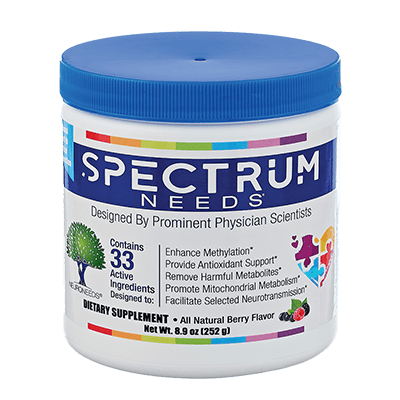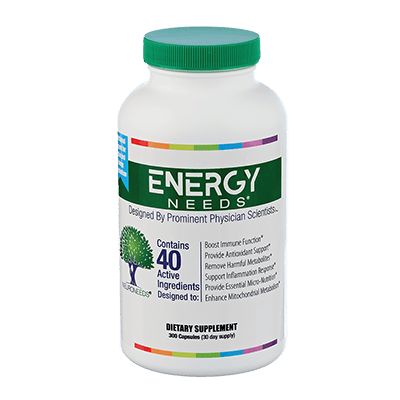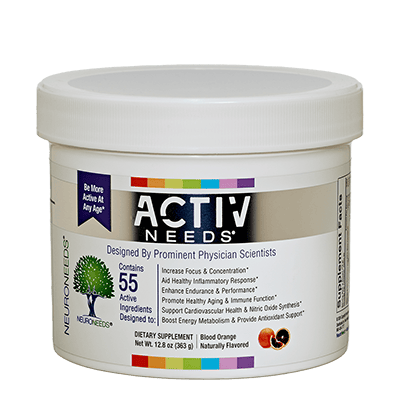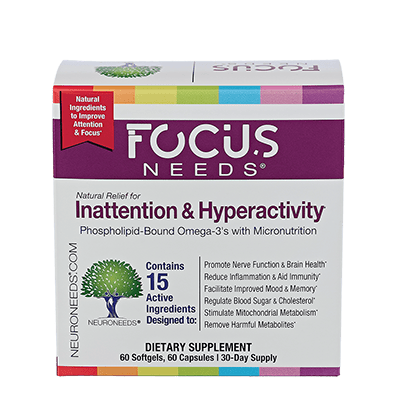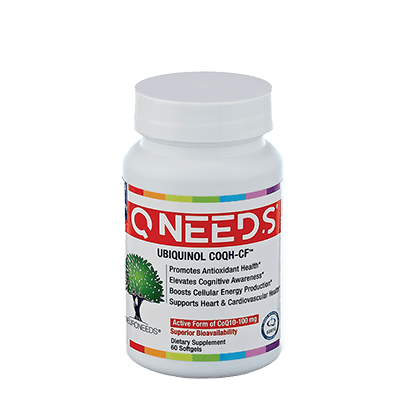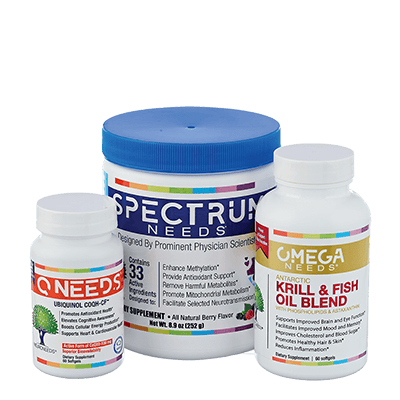BY: Dr. Richard Boles; Published February 24, 2020
The last few years have demonstrated continued rapid improvements in terms of the technology enabling genetic testing, the number and types of genetic tests that are clinically and commercially-available, and the knowledge base used to interpret test results.
One of my major focuses over the last decades has been in the care of neurodevelopmental disorders (NDD), including autism, ADHD, intellectual disabilities, epilepsy, and other conditions. The NDDs are very highly genetic in etiology, and the genetics is extremely complicated. Some of the more frequently-identified genetic scenarios are:
1. A de novo new mutation, meaning a sequence variant in the DNA that is absent in both parents.
2. No single “cause” of disease is identified, but multiple genetic risk factors are present, generally inherited from both parents.
3. Even if the “cause” of the neurodevelopmental disorder is not identified, variants related to symptoms that the person suffers from may be identified that are treatable.
Genetic Testing of Neurodevelopmental Disorders:
There are hundreds of genes that have been demonstrated to be associated with the NDDs, and thousands more in the same pathways that likely are associated with them. Variants in these genes can be of any size, ranging from a single nucleotide to millions of nucleotides. These variants can be in the chromosomes or in the mitochondrial DNA (mtDNA). They can be novel (never seen before) or quite common (risk factors). Sometimes they affect repeat sequences, such as fragile X. Finally, these variants can be within genes, or in-between genes, meaning they would be missed by whole exome sequencing (WES). This extraordinary genetic heterogeneity means:
1. Whole genome sequencing (WGS) is the appropriate test in most cases. WGS from some laboratories not only sequence all of the genes and areas between genes, but also provides much additional information not available by WES:
a. mtDNA sequencing.
b. Structural rearrangements, including deletions and duplications, with better detection than chromosomal microarray (CMA).
c. Trinucleotide repeats, including fragile X.
d. Pharmacogenetic variants that affect drug metabolism, effectiveness, and adverse effects.
2. Trio testing (sequencing the patient and both parents) is appropriate in most cases, in order to find de novo variants. De novo variants are fairly common, present in about a third of cases with disease beyond the mild end of the spectrum, and often indicate the “cause” of the disease.
Benefits of Genetic Testing in Autism
Studies in genetic testing are difficult to conduct as, by the time of publication, the technology, practice, and knowledge base all have progressed significantly. At the time of the publication of the American College of Medical Genetics guidelines in 20131, the three most recommended tests were CMA, fragile X, and MECP2 (Rett) gene sequencing, with an expected diagnostic yield in autism of 30% to 40%. Today, with the advancements of WES and WGS, the projected increase in yield is an additional 10-15%. Together, the above-recommended testing menu of CMA, WES, mtDNA, and fragile X (or WGS), is expected to provide a diagnostic yield of about 50% for autism, and higher for syndromic autism. This is consistent with current practice observations. My results are somewhat higher, likely the advantage of being the reading geneticist and treating clinician.
Some examples of the how genetic testing changes patient management and improves outcomes may be seen in the following case studies from the practice of the senior author.2 These cases also demonstrate variability in genetic mechanism, comorbid manifestations, and the degree of improvement with specific therapy.
Carter presented at age 1 year with arrested speech development co-incident with a measles-mumps-rubella vaccination, and eventually led to the diagnosis of autism at age 3 years. As evaluated at age 6 years, Carter had “typical” or “classical” manifestations of autism, with severe behavioral issues and moderate intellectual disability.
Upon genetic sequencing, Carter was found to have a highly-conserved variant, p.Ile253Val, in the TRAP1 mitochondrial chaperone gene, which protects mitochondrial proteins from adverse environments such as oxidative stress. While this variant is found in about 1% of the European-American population, the same variant was identified in the senior author in several patients with “functional” phenotypes, and on further study was found to be statistically associated with symptoms of chronic pain, fatigue, and GI dysmotility.49 While most female patients, and some male patients, identified with TRAP1 p.Ile253Val present with the above-listed functional symptoms, neurodevelopmental phenotypes of autism or ADHD were noted to be common in their male siblings. Statistical analysis revealed an association between TRAP1 and autism. Thus, it was postulated that the mutant TRAP1 protein may be a contributing factor in autism pathophysiology.
As TRAP1-related disease (T1ReD) is dominant with extreme variable expressivity, a dominant negative mechanism is postulated. Computer modeling was performed to identify a molecule that is predicted to tightly bind to the mutant 253-valine-containing ATP-binding pocket on the TRAP1 mitochondrial chaperone, but not to the normal 253-isoleucine-containing pocket, in an attempt to essentially “turn off” the mutant molecule (unpublished work in collaboration with Dr. Jeffrey Skolnick, Georgia Tech). The medication granisetron, often used in chemotherapy-associated nausea and vomiting, scored very high on this in-silico analysis, and was anecdotally noted to be associated with a dramatic reduction of functional symptoms in a few patients.
Thus, granisetron was prescribed in Carter following informed consent at age 8 years. Within days to weeks, his parents saw significant behavioral improvements. He was more talkative, able to express himself more effectively, and more tolerant of situations that had previously been challenging. In fact, the family was able to take Carter with them to restaurants, which was previously unthinkable due to his behavior. School personnel noted that he was more focused, less aggressive, and had fewer sensory integration issues. Granisetron is an expensive medication, and due to insurance–related issues and a nationwide shortage, Carter was cycled off the medication at least four times, and each time the treatment was stopped, he reverted to much of his previous behavioral state. Currently at age 11, Carter is still doing well on granisetron.
Kelly, now a 29-year-old woman, presented to the senior author as a teenager with a chief complaint of a continuous migraine. She also suffered from persistent severe nausea and vertigo, profound chronic fatigue syndrome, bowel dysmotility, tachycardia, fainting, depression and anxiety. She has high functioning autism, and while intelligent, highly creative, and fully able to speak, she communicates verbally only with her mother. With others, she is fully-conversational through a computer with a voice synthesizer. Due to her continuous severe pain and fatigue, she rarely left her house.
Biochemical laboratory testing revealed the presence of a degree of mitochondrial dysfunction, and upon treatment with a mitochondrial cocktail, her physical manifestations improved. The mitochondrial cocktail refers to combined nutritional support, including vitamins, minerals and cofactors, for mitochondrial metabolic dysfunctions, and generally consists of about 10-30 different components. The data supporting nutritional support in autism is strongest for the following nutrients: carnitine, coenzyme Q10, magnesium, pyridoxine (vitamin B6,) folate (vitamin B9,) cobalamin (vitamin B12,) and vitamin D3,50 and these nutrients are common constituents of a mitochondrial cocktail.
Genetic sequencing at age 29 identified two very rare and highly conserved variants, p.Arg107Trp, and p.Arg149Gln, in the glutaminase 2 (GLS2) gene. GLS2 encodes for an enzyme that converts glutamine to glutamate. Loss of this enzyme could regulate cellular energy metabolism as glutamate is converted into alpha-ketoglutarate, an intermediate of the citric acid (Krebs) cycle in the mitochondria. Alpha-ketoglutarate is a rare component of the mitochondrial cocktail, and not one that Kelly had previously been treated with. When added to her regimen and titrated upwards, significant improvement followed in terms of greatly reduced pain and fatigue.
Zach lost all acquired language skills at age 18 months and was diagnosed with autism at age 2 years. At age 6 years, he developed cyclic vomiting syndrome, a condition defined by distinct stereotypical episodes of nausea and vomiting. He was hospitalized many times for clean-outs for obstipation and underwent multiple procedures to have tubes placed in different bowel segments. At age 12 years, Zach developed complex regional pain syndrome and was unable to bear weight. Despite high doses of opiates, he was completely wheelchair bound and in severe chronic pain. Vomiting and pain resolved on treatment with amitriptyline, coenzyme Q10 and L-carnitine, and opiates were withdrawn. However, Zach continued to suffer from severe autism, dysautonomia, fatigue, and bowel failure. He was also very sensitive to amitriptyline, and clinical management included a delicate balancing act to find the desired spot between a return of chronic pain and lethargy related to the drug.
At age 19, genetic testing revealed an uncommon (prevalence 0.5%) and highly-conserved variant, p.Leu340Phe, in the choline O-acetyltranferase (CHAT) gene. This gene encodes for the enzyme that catalyzes the synthesis of acetylcholine, an important neurotransmitter, from choline and acetyl-CoA in cholinergic neurons.51 Acetylcholine has an important role in the parasympathetic nervous system, and many of Zach’s manifestations, including a triad of episodic reduction in mental status, postural orthostatic tachycardia syndrome (POTS), and severe reactions to anticholinergic medications suggested an anticholinergic status and/or parasympathetic deficiency. Furthermore, the same p.Leu340Phe variant was noted in a girl with the same triad of manifestations, but without autism, and physiological testing in both including heart-rate variability revealed very low parasympathetic activity.
Zach was given Donepezil, an acetylcholinesterase inhibitor, to block the enzyme that breaks down acetylcholine, thus prolonging its half-life in synapses. Upon treatment, his pain and fatigue improved considerably. However, the most dramatic improvement was in his autism. Zach progressed from echolalia to speaking in full sentences, and had fewer autistic outbursts.
Payam was diagnosed with autism at age 18 months. He had hypotonia and mental health disorders which included obsessive compulsive disorder, anxiety, irritability, and aggression. In addition, he had functional disease issues which included severe constipation since birth, fatigue, sleep problems, and night twitches. The above-mentioned issues are not uncommon in patients with autism.
At age 18 years, genetic testing revealed a very-rare splice-site variant, c.1017T>C, in the SLC6A8 gene, which is on the X-chromosome and encodes for a creatine transporter. This variant was felt to be an excellent candidate for disease association, as disease related to variants in this gene52 are a good match in Payam. Cerebral creatine deficiency due to pathogenic variants in SLC6A8 is a relatively common cause of intellectual disability in males, and can result in autism and psychiatric conditions. This condition is very difficult to identify and confirm, and treatment with creatine is efficacious only in some cases. A creatine therapy trial of 5 mg BID failed in Payam. Cyclocreatine, which travels across the blood brain barrier without the creatine transporter and is modified to creatine in the brain, was administered as a trial. The dosage provided was 1.67 grams per day. Independent observers noted the following changes in Payam after treatment with cyclocreatine: decreased anxiety, more expressive language output, fewer behavioral manifestations of autism, increased ability to handle change and frustrations, greater environmental awareness, improvements in visual attentiveness, decreased hypotonia, and a more erect posture.
Randy was already showing signs of expressive speech delay when at age 18 months he lost all communication skills and parental bonding over a 2 to 3-month period that began with a febrile illness. The diagnosis of autism was made at age 2 years. He had another episode of developmental regression at age 4 years during which he lost acquired speech. At evaluation at the age of 5 years, he had severe autistic behaviors, severe intellectual disability, and absent speech. Additional problems included chronic constipation, gastrointestinal reflux disease, and a periodic sleep disorder. Regarding the latter, every 3 weeks, he had an episode in which for 4 days he would remain awake between 2 and 5 AM, which was highly disruptive for his parents.
At age 6 years, genetic testing revealed a novel, highly-conserved, missense variant, p.Ser97Leu, in the AANAT gene, which is an excellent candidate for the bizarre periodic sleep anomaly. This gene encodes for the serotonin N-acetyltransferase gene that is involved in melatonin production, and in particular responsible for the pulsatile circadian release of melatonin.53 Randy’s sleep normalized on low-dose (1 mg) melatonin. Additional candidate variants were identified that may be disease related, including in the HERC2 gene which encodes for an E3 ubiquitin ligase, a pathway known to be associated with autism, but this additional information did not translate into an improved clinical outcome.
My Practice Protocol:
Genetic laboratories issue standard reports that are constrained by narrow interpretations, or are non-specific and non-committal, resulting in much confusion for providers and patients. Risk factor variants are generally neither identified nor discussed. Laboratories also have a very limited understanding of the complexities of the disease in the individual patient, and family. This is not a criticism of laboratory personnel, I was a Medical Director of a sequencing laboratory for 6 years, but a limitation of laboratories in general not applying to treating physicians. When I am the treating physician, I will typically:
1. Take a very-detailed analysis of the case, in order to really understand the disease process, the unique individual that is your child, and the family.
2. Re-analyze the raw DNA sequencing data files from the genetic laboratory, not simply analyze the findings identified and reported by the laboratory.
3. Directly compare the variants of potential
interest identified with your child and family.
4. Advise and assist you in treatment based on
the genetic results and other aspects of the case, as well as with the ongoing
management of complex genetic findings.
The primary focus is always on finding effective treatment. Many of the genetics pathways associated with NDDs are treatable, often including energy/mitochondrial metabolism, other metabolic pathways, ion channels, and neurotransmitters.
Unfortunately, not every patient receives a diagnosis, not every variant is treatable, and not every treatment tried is successful. However, many of the results at this time include some degree of improvement in most children, and at least moderate improvement in about half of them. Furthermore, having essentially the entire DNA sequence on file also allows for the potential identification of additional treatment options as knowledge increases.
Options If You Want Me to Evaluate Your Child’s DNA Sequence:
There are different options for different budgets and locations, but in all of these options, I read the raw DNA sequence data with a primary focus on treatment.
1. Peer-To-Peer: This option is available throughout the world. I help your physician to order appropriate testing, to understand the results, and to apply the results in an attempt at therapy. If interested email neurogenomics@cnnh.org.
2. Telemedicine: This option is only available in locations where I have a medical license: Arizona, California, Florida, New Jersey, Pennsylvania, and South Carolina, but you can travel to one of these locations. This is almost-exactly like an in-person consultation, only via a computer audio-video connection. If interested email neurogenomics@cnnh.org.
3. In person: A consultation in Pasadena, California. If interested email drboles@molecularmito.com.
References:
1. Clinical Genetic Aspects of ASD Spectrum Disorders. Int J Mol Sci. 2016;17(2):180. Published 2016 Jan 29. doi:10.3390/ijms17020180
2. The families involved all consented for publication of these min-case reports. These cases were discussed by Dr. Boles in multiple formats, including publication in May 2020 as a Special Issue on Autism for Seminars in Pediatric Neurology.
The Content within this article and NeuroNews Blog is not intended to be a substitute for professional medical advice, diagnosis, or treatment. Always seek the advice of your physician or other qualified health provider with any questions you may have regarding a medical condition. Never disregard professional medical advice or delay in seeking it because of something you have read on this Blog.

